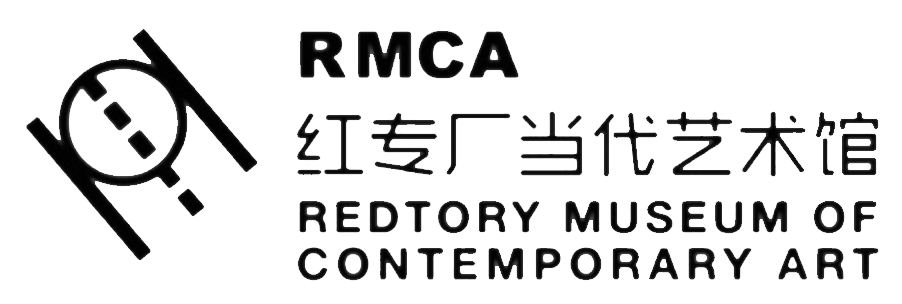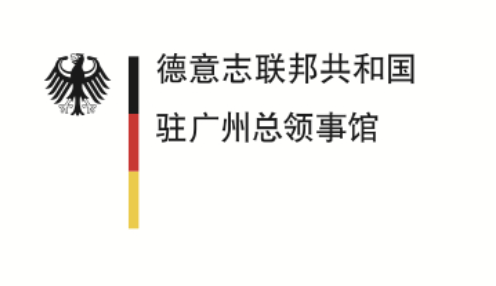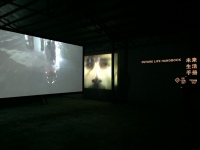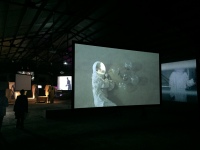MOMENTUM and
co-present:
17 December 2017 – 7 May 2018
Featuring:
aaajiao // Amir Fattal // Mariana Hahn // Law Yuk-mui // Miao Ying // Zijie
Curated by Rachel Rits-Volloch
Academic Director, Dong Bingfeng
OPENING: 16 December @ 14:30 – 18:30
Opening Discussion @ 14:30 – 16:30
@ RMCA Redtory Museum of Contemporary Art
Guangzhou, China
SPEAKERS:
Dong Bingfeng, Curator and Research Fellow, School of Inter-media Art, China Academy of Art, Beijing;
Rachel Rits-Volloch, Founding Director of MOMENTUM;
ARTISTS: Aaajiao, Mariana Hahn, Zijie
MODERATOR: Vivienne Chow, Journalist, Critic and Founder of Cultural Journalism Campus
Performance @ 16:40 – 18:10
Mariana Hahn, Stored-Story Body-Archive
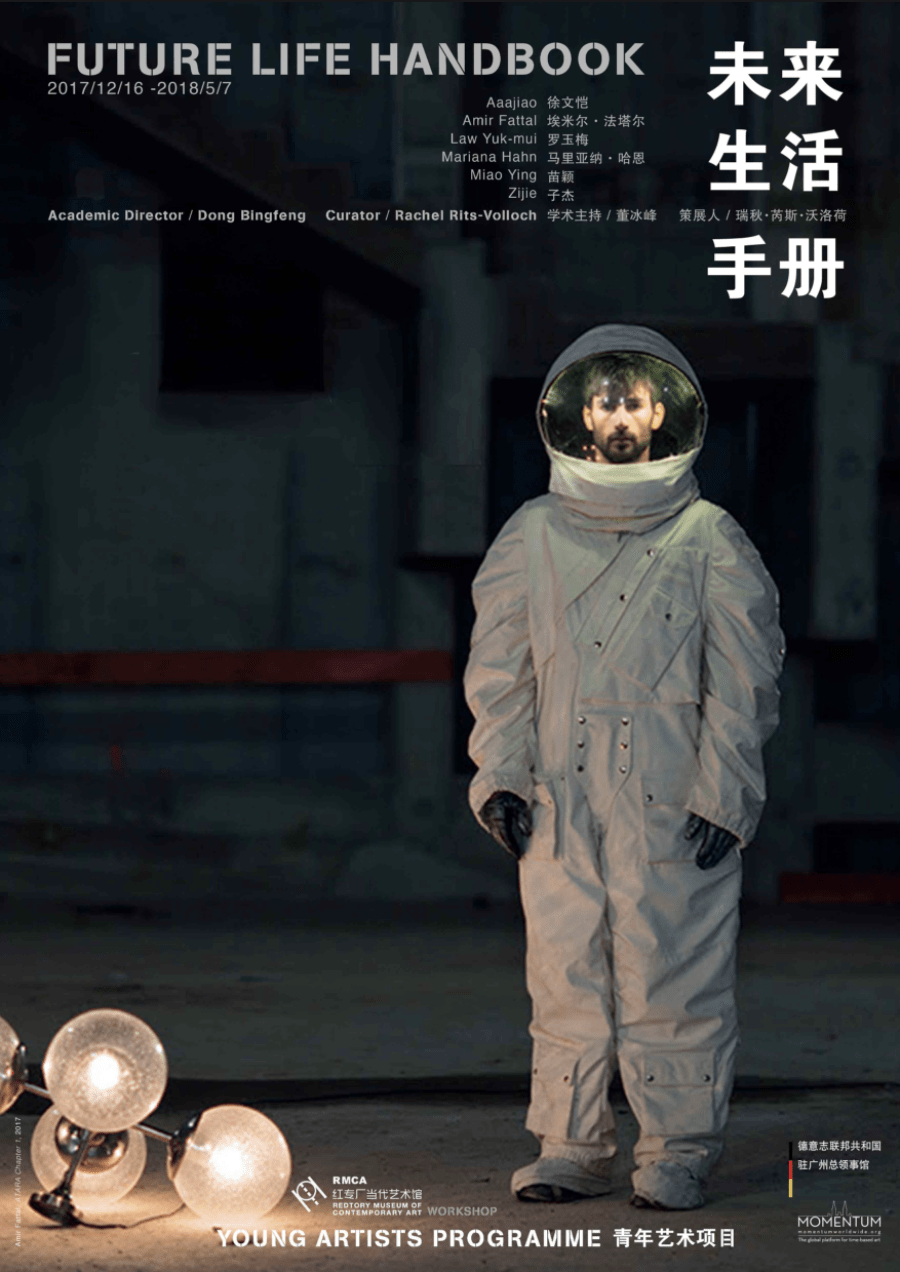
|
DOWNLOAD FUTURE LIFE HANDBOOK CATALOGUE
|
 |
Future Life Handbook. We would all like to have one of these – a guide on how to keep going in troubling times. As information moves faster and faster, in our race to keep up with it, we are often too busy with the now to look to the future. As the struggle continues between preserving history and rewriting it to fit a new script, it is also becoming ever harder to tell the difference between real and fake news. And, if both our past and our present are continuously reimagined, how are we to forecast our futures? Universal to all of us living in these mediated times, the ubiquity of such issues brings us much closer together.
Artists ‘speaking’ through the autonomous voices of visual languages, translate the world to us in different, unbounded ways. This exhibition brings together the work of six young artists and two curators from China and Berlin. It is designed as a dialogue, as an exchange and elaboration of different perspectives that reflect upon our current moment through a study of the past and a view towards the future.
In bringing to RMCA three young Berlin-based artists from different countries with three Chinese artists we are again opening that gateway to let the voices of today’s generation speak about the issues common to our experience, despite the diversity of our backgrounds.
CURATORAL STATEMENT – RACHEL RITS-VOLLOCH
Berlin: a city of only 3.5 million people, home to 175 museums, over 500 commercial art galleries, and close to 200 non-profit art spaces, has become known internationally as the ‘Art Capital of Europe.’ For almost 30 years it has attracted artists from around the world who, feeding on and into its creative energy, have made it their adoptive home. At the geographical center of Europe, Berlin acts as a vortex, sucking in the cool, bright young things of art, design, media, music and fashion, but also professional people as well as tourists and migrant laborers and refugees. Berlin is a city where everyone always seems to be from elsewhere; it is still rebuilding itself 70 years after World War II; it is a place perpetually atoning for its painful and violent history; and now it re-invents itself through culture.
Guangzhou: a city with a population of over 14 million in the heart of the Pearl River Delta, has historically been a fount of new and radical ideas about art and culture as well as China’s southern gateway to the rest of the world. As it has developed over the past 40 years it has become not only an economic and cultural powerhouse emblematic of change in China but also has turned its face again outwards. In bringing three young Berlin-based artists to RMCA to present work together with Chinese artists, we are again opening that gateway to let the voices of today’s generation speak about the issues common to our experience, despite the diversity of our backgrounds.
The three Berlin-based artists in this exhibition, Amir Fattal, Mariana Hahn, and aaajiao, are as diverse as the city itself and make works that reflect equally broad viewpoints. The selected works are all, in their own ways, ongoing projects. Begun in previous contexts, they have evolved over time, growing through the artists’ ongoing experiences into active laboratories that continue to process the ‘then’ and the ‘now’ into something new.
Amir Fattal (born 1978 in Tel Aviv, Israel) has lived in Berlin since studying at the Universität der Künste,from which he graduated in 2009. He is a conceptual artist whose practice is one of historical reflection grounded in the history of aesthetics and cultural schism. Working in the media of video, photography, sculpture, and installation, his work constitutes a focused response to the diverse questions raised by his adoptive city of Berlin, where memory, culture, architecture, indeed every thread in the fabric of this city, are problematized by its history.
Fattal’s video work ATARA, Chapter 1 (2017) is both a science-fiction film set to contemporary opera music, and a reflection on the collective memory of architecture and its symbolic representation in public space. Shot on location, it tells the story of two buildings that used to stand in the same place: the Berliner Stadtschloss and the Palast der Republik. The Stadtschloss, the imperial, royal palace, was built between the 15th and 18th centuries, was severely damaged by Allied bombing in WWII, and in the 1950s its ruins were finally obliterated by the newly constituted Communist government of the German Democratic Republic (GDR) on the grounds of being a symbol of Prussian militarism. A glass and concrete Palast der Republik was built in its place and opened in 1973 as the seat of government, but upon the Reunification of Germany in 1990 it was closed to the public and its rotting hulk, too, was eventually destroyed in 2009, amid much controversy, so that a contemporary copy of the original Stadtschloss could be rebuilt on its site. This is still under construction today and the decision to resurrect the symbol of the ancient castle in order to rehouse Berlin’s ethnographic and historical museums at the centre of the city, is interpreted by many as an absurd and willful erasure of its GDR past and a dangerous rewriting of history. This controversy is keenly felt in a city that perpetually treads a fine line between never forgetting its painful legacy, and reinventing its future.
Shot at several stages in the process of the new building’s construction, Fattal’s work, already three years in the making, is still under construction itself; it will be completed as the building is finished and starts to function as part of the city. ATARA, Chapter 1 imagines a ceremony taking place in the Palace at the moment of its resurrection while its predecessor dematerializes into ghostly memory. Its musical score is based on Richard Wagner’s opera Tristan and Isolde, together with original music by Boris Bojadzhiev, while its narrative follows the movements of an astronaut, who reconstructs, in exacting detail, the historic sculptural elements destined to adorn this otherwise contemporary building. Carrying an iconic lamp from the destroyed Palast der Republik, he wanders through the construction site of the new Stadtschloss – like an explorer in an alien land where some mystic force has merged past and future together.
Mariana Hahn (born 1985 in Schwäbisch Hall, Germany) was educated in London at the Central Saint Martins University of the Arts, and returned to Berlin in 2012. In her performances, installations, and videos, she engages with both archetypical and local legends by weaving a common female mythology between them that enters into dialogue with the present.Stored-Story Body-Archive (2015/17), shown in this exhibition, was initially created during an Artist Residency at Mill6 Foundation in Hong Kong, where she became fascinated by the story of the Zishunü (自梳女) the so-called ‘self-wedded women’ silk workers of the Pearl River Delta, who chose to retain their independence by refusing to marry. Some had fled to Hong Kong in the 1940s, and two were rumored to still live on Lantau island. Mariana Hahn went there to see what traces she could find, happen- ing also to meet one of the last of the old ‘Tanka’ (疍家) Boat Dwellers who fish from the island. Her installation Stored-Story Body-Archive, composed of silk dresses, photographs, videos, postcards, and performance, brings together the stories and crafts of these people with our current state of cultural amnesia and careless disregard for past traditions. The ‘Tanka’ are now forbidden to work beyond the threatening pylons of the newly constructed Hong Kong – Macau Bridge, and the waters surrounding Lantau have become so polluted that they are no longer able to catch enough fish. Crafts, memories and human values are irrevocably lost in the mindless march of progress.
The result of a long period of research, unearthing traces of Hong Kong’s complicated history beneath layers of the present, Stored-Story Body-Archive began as a view of Hong Kong through the eyes of a stranger. For this exhibition, Mariana Hahn brings her journey full circle: chronicling her experiences travelling to Guangzhou, to the origins of the Zishunü sisterhood in the Pearl River Delta, she continues this work by following the path of these remarkable women back to their roots. During an Artist Residency at RMCA, she develops a new performance piece, creating her own story as an independent woman artist following in the footsteps of the local Zishunü silk workers.
aaajiao (born 1984 in Xi’an) is the virtual persona of Shanghai and Berlin-based artist Xu Wenkai. Active online as a media artist, blogger, activist and programmer, aaajiao’s practice is marked by a strong dystopian awareness. His work speaks to new thinking, controversies and phenomena around the Internet, to the processing of data, the blogosphere, and China’s Great Fire Wall. aaajiao’s work is interdisciplinary, extending from post-internet art to architecture, topography, design and beyond, to capture the pulse of the younger generations’ consuming interest in cyber-technology and its use of social media. Body Shadow (2014/17), shown in this exhibition, was initially created as a result of his Artist Residency at MOMENTUM in Berlin in 2014. After this he decided to move to Berlin to maintain a studio parallel to his practice in Shanghai.
Body Shadow brings together, in an entirely unique way, Berlin’s vibrant tattoo culture with ancient Chinese philosophy and medicine. Through research and studio visits to Berlin’s leading tattoo artists, aaajiao devised a way of turning a tattoo inside-out. Rather than making simple, decorative marks on the exterior of the body, he has allowed the energy pathways inside the body to determine the form of the tattoo as biologically personalized images. Combining fractal theory with the science of acupuncture, he developed an algorithm that, when the human body is scanned, creates a 3D image that (reflecting the traditional Chinese medical belief that qi [life force] flows within the body), tracks the activity in its meridian pathways. In this combination of tattoo and algorithm, he has mapped and transplanted his own internal meridian energy onto the surface of his body and then projected it into the gallery space. Started in Berlin in 2014, this ongoing project has been updated this year.
CURATOR STATEMENT – DONG BINGFENG
In Beijing, November heralds a drastic drop in temperature. At first, it cools so gradually that it can hardly be felt but, within a few days, the thermometer abruptly plummets amid strong gales. However many warm, thick clothes you put on, biting winds sweep across the streets, storm straight into your lungs and trigger an
avalanche in your body.
Winter in northern China signifies way more than inexplicable coldness – it demands fundamental changes in daily life, work, social activities, even in one’s sense of taste and smell. Inevitably, people’s diet also simplifies and changes, in spite of some produce being forced in greenhouses or freighted in by costly air transport. Even before it snows, the city is pervaded with pungent smells and familiar sights, unique to the season.
Zijie’s Sweet Potato Project brings back almost all my childhood memories of this season. Born into a rural family in northern China, I’m well acquainted with such produce as potatoes and sweet potatoes. As a child, I didn’t know that sweet potatoes (which have more than 10 other names in Chinese), originated from the faraway continent of South America – I hadn’t even travelled farther than three kilometers from where I lived, so I didn’t have any sense of what a city could be like. For sure, I knew nothing about how to grow them – only about eating them – because I was a lazy child or, perhaps I should say, I was prone to indulge in fantasy. I am happy when a sweet potato is dug out from the soil, it is as if I found a ginseng root which, as we all know from the Chinese classic Journey to the West, bestows longevity. Who would have thought that sweet potatoes come not only from farmland, but also from cities or that they may even serve as a medium or subject for art? Zijie shows us how this simple vegetable can become art and in my imagination there is nothing more important for human life than food, and our choice of it.
When it comes down to making recommendations about life, no one should pay much attention to scientific analysis or to the nonsensical ramblings of academic theorists. As the Chinese saying goes, reading thousands of books is not as enlightening as traveling thousands of miles – in life, there’s nothing more important than personal experience. Each and everyone’s own experiences are abundant enough to compose a thick, colourful book. Other than blunders, and bad luck once in a while, there is plenty of joy and fulfillment in life that is worthy of being recorded. Having said that, one should not daydream too much./p>
My first visit to Hong Kong took place fairly recently. Although in 2000 I had worked in Guangzhou, which was pretty close, I didn’t plan any trip then to the ‘Cosmopolis.’ I am still confused as to why I didn’t and have concluded that I am afflicted with procrastination. But eventually I made it and saw Law Yuk-mui’s solo exhibition Victoria East there. In retrospect, rather than the exhibition’s good looking video installations and meticulously displayed literature and research, my greatest impression was of the city of Hong Kong itself, its bustle and confusion. But to be precise, I was also entranced by such images in the exhibition as a white sun set against the blue sky like a flag, a turbulent stretch of sea, and a bizarre silhouette caught against a skyline – all seemingly obscure and incomprehensible details and clues. But the presence of the artist and her artwork reflected back to me the afflictions and blanks in my own memory. I believe that Law helped me unravel the dilemma of how should we reflect on the past. Should we respect our memories, or observe cultural norms? At the very least, she confirmed my belief that we should keep on moving.
At a time when virtual reality surpasses reality, or when so-called reality is only the externalization of power and capital, the distinction between the real and the virtual is rendered meaningless. The explorative vision and visual methodologies of Miao Ying’s installation Content-Aware, as well as the massive production of images and value judgments we see nowadays, are both trapped in an endless cycle of conscious experience. This artist, in particular, has stressed the randomness and self-destructiveness of such image production in which bad images seem more charming and emotionally charged than industrialized ones. It is a matter well worth celebrating if people still feel entitled to their individual responses. Always daring to be different.
Beijing’s piercing winds see fewer people on the streets. The chills, however, never deter people in some walks of life: mailmen, for instance. The Double 11 Shopping Festival, a Chinese online version of Black Friday, which took place the other day, reportedly broke a record in transaction volume, totaling 25.3 billion $ U.S., up 40 percent from last year. The turnover is undoubtedly record-breaking, if not astronomical, although I didn’t contribute a cent to it or, I should say, I frittered away the chance of buying something in time. Moreover, this event has evolved into a cultural phenomenon – an artistic landscape. Nothing has involved more visuality or participation than this performance-like event. Everybody does everything step by step, including those celebrities who participate, each performing their own roles as they are supposed to, faithfully keeping within their prescribed time span.
In the light of all this, should art exhibitions be steered toward reality? Or should they portray different sorts of personal experience along with authentic memories that may be finally celebrated amidst reality? Maybe in the end we are just like that pathetic man in the movie The Truman Show (1998) who just lives under a surveillance camera? If this is not the case, how can we return to a consideration of reality when we discuss art? In a nutshell, how should we return to the daily perception and experience of life in a direct way – in ways that suit our own body temperatures and odours?
Take it slow – am I still alive?
I believe, for instance, that although it’s smooth and convenient to type on computers, it will never replace pen and paper because this way of writing exudes a sense of reality because it is based on friction.
Life is all about the future, I’d like to say./p>
Mariana Hahn
Mariana Hahn (born 1985 in Schwäbisch Hall, Germany. Lives and works in Berlin)
Mariana Hahn was educated in London at the Central Saint Martins University of the Arts, and returned to Berlin in 2012. In her performances, installations, and videos, she engages with both archetypical and local legends by weaving a common female mythology between them that enters into dialogue with the present.
Mariana Hahn studied theater at ETI in Berlin and has a degree in Fine Art from Central Saint Martins University of the Arts in London (2012). Selected exhibitions include the 57th Biennale of Venice collateral event An Ocean Archive (2017); Corpo Festival del Arte Performative, Venice (2017); Performance Festival, Municipal Art Gallery, Kharkiv, Ukraine (2017); Social Fabric, Mill6 Foundation, Hong Kong (2016); the 56th October Salon ‘The Pleasure of Love’, Belgrade, Serbia (2016); Ganz Grosses Kino, Kino International, Berlin (2016); Love, Actually…, MOMENTUM, Berlin (2016); VACANCY, Galerie Crone, Berlin; IV Moscow Biennale for Young Art, Russia (2014); Thresholds; TRAFO Museum of Contemporary Art, Stettin, Poland (2013); Works on Paper Performance Series, MOMENTUM, Berlin (2013, 2015); About Face, MOMENTUM, Berlin (2012).
Stored-Story Body-Archive (2015/17)
Stored-Story Body-Archive (2015/17) was initially created during an Artist Residency at Mill6 Foundation in Hong Kong, where Mariana Hahn became captivated by the story of the Zishunü(自梳女)the so-called ‘self-wedded women’ silk workers of the Pearl River Delta, who chose to retain their independence by refusing to marry. Some had fled to Hong Kong in the 1940s, and two were rumored to still live on Lantau Island. Hahn went there to see what traces she could find, happening also to meet one of the last of the old ‘Tanka’ (疍家) Boat Dwellers who fish from the island. This installation contrasts the stories and crafts of these people with our current state of cultural amnesia and careless disregard for past traditions. The ‘Tanka’ are forbidden to work beyond the threatening pylons of the newly constructed Hong Kong – Macau Bridge, and the waters surrounding Lantau have become so polluted that fishermen are no longer able to catch enough fish. Crafts, memories and human values are irrevocably lost in the mindless march of progress. For this exhibition, Mariana Hahn brings her journey full circle: travelling to Guangzhou, to the origins of the Zishunü sisterhood in the Pearl River Delta, she continues the research she began in Hong Kong, following the path of these remarkable women back to their roots. During an Artist Residency at RMCA, she is also developing a new performance piece, creating her own story as an independent woman artist following in the footsteps of the Zishunü silk workers of the Pearl River Delta.
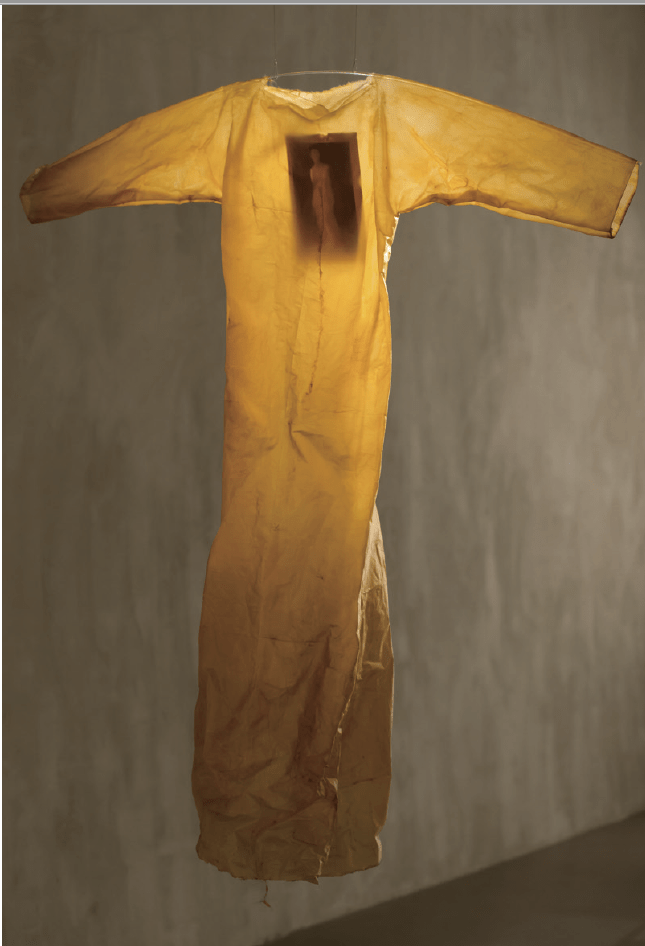
aaajiao
aaajiao (born 1984, Xi’an, China. Lives and works in Shanghai and Berlin)
aaajiao aaajiao is the virtual persona of Shanghai and Berlin-based artist Xu Wenkai. Active online as a media artist, blogger, activist and programmer, aaajiao’s practice is marked by a strong dystopian awareness. His work speaks to new thinking, controversies and phenomena around the Internet, the processing of data, the blogosphere, and to China’s Great Fire Wall. The form of his work is interdisciplinary, extending from post-internet art to architecture, topography, design, and beyond to capture the pulse of the young generations’ consuming fascination with cyber-technology and social media.
aaajiao’s work has been featured in numerous exhibitions around the world. His solo exhibitions include: Remnants of an Electronic Past, Centre for Chinese Contemporary Art, Manchester (2016); OCAT Contem- porary Art Terminal Xi’an, Xi’an (2016).Upcoming and recent group shows include: Art in the Age of the Internet, 1989 to Today, The Institute of Contemporary Art, Boston (2018); unREAL, Haus der Elektronischen Künste, Basel (2017); Shanghai Project Part II, Shanghai (2017); Temporal Turn: Art and Speculation in Contemporary Asia, Spencer Museum of Art, Kansas (2016); Take Me (I’m Yours) (curated by Hans Ulrich Obrist, Jens Hoffmann and Kelly Taxter), Jewish Museum, New York (2016); Overpo, Yuz Museum, Shanghai (2016); Hack Space (curated by Hans Ulrich Obrist and Amira Gad), K11 Art Foundation Pop-up Space, Hong Kong and K11 Art Museum, Shanghai (2016); Globale: Global Control and Censorship, ZKM | Centre for Art and Media, Karlsruhe (2015); Thingworld International Triennial of New Media Art, The National Art Museum of China, Beijing (2014); and Transmediale, Berlin (2010). He was awarded the Art Sanya Awards in 2014 Jury Prize, and was nominated for the first edition of OCAT-Pierre Huber Art Prize in 2014.
Body Shadow (2014/2017)
Body Shadow (2014/2017) brings together Berlin’s vibrant tattoo culture with ancient Chinese philoso- phy and medicine. After research and studio visits to Berlin’s leading tattoo artists, aaajiao devised a way of turning a tattoo inside-out by making it a biologically personalized image. Combining the theory of fractals and the science of acupuncture, he developed an algorithm both to scan the human body in 3D and to track the activity in its meridian pathways according to traditional Chinese medical belief. With this knowledge he has designed tattoos that map and transplant this internal energy both onto the surface of his own body and into the gallery space.
Body Shadow was initially created as a result of aaajiao’s Artist Residency at MOMENTUM in Berlin in 2014.
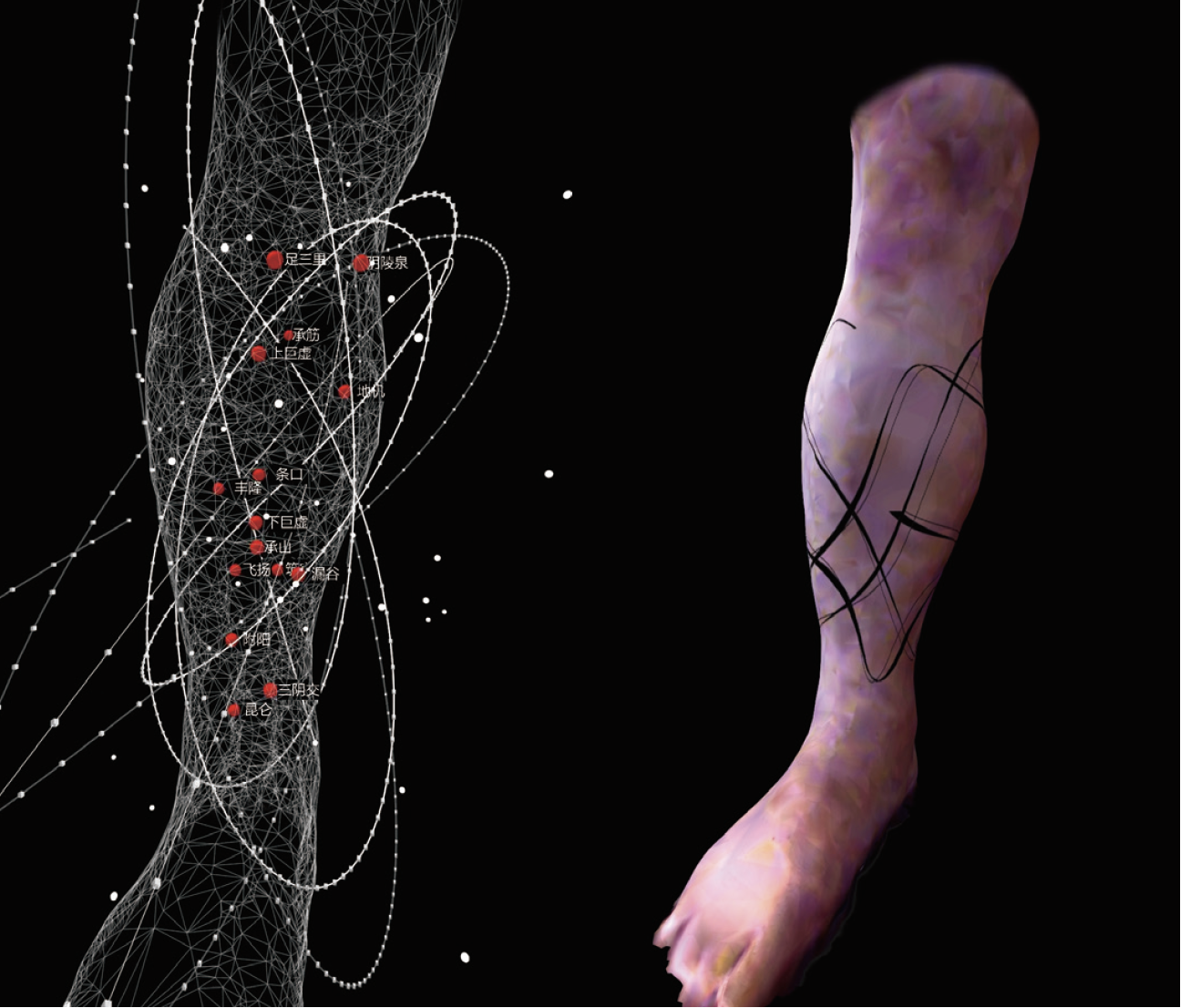
Amir Fattal
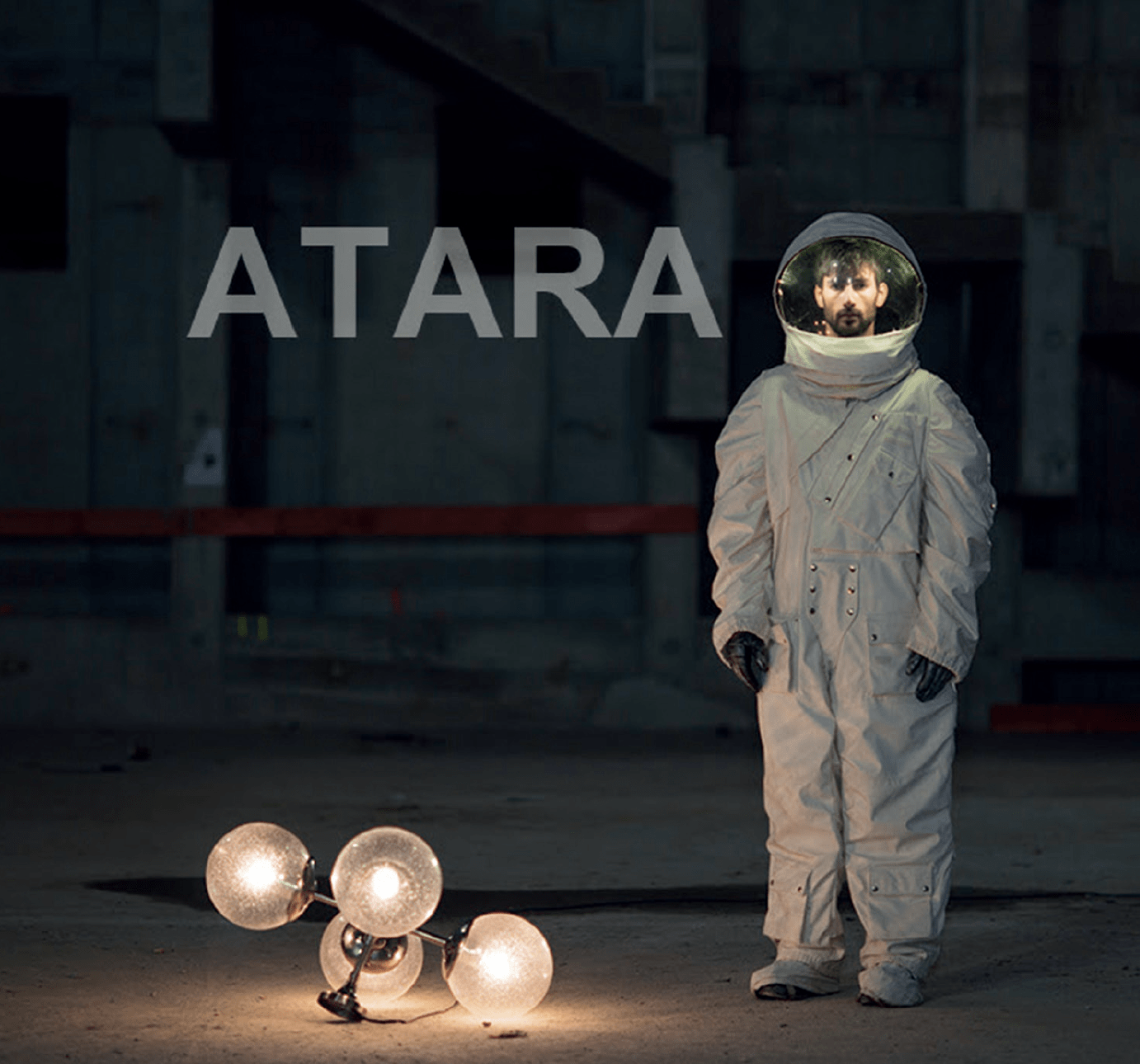
Amir Fattal (born 1978 in Tel Aviv, Israel. Lives and works in Berlin)
Amir Fattal has lived in Berlin since 2009. He is a conceptual artist whose practice is one of historical reflection grounded in the history of aesthetics and cultural schism. Working in the media of video, photography, sculpture, and installation, his work forms a focused response to the diverse questions raised by his adoptive city of Berlin, where memory, culture, architecture, indeed every thread in the fabric of the city, are problematized by history.
Amir Fattal was distinguished with the GASAG Art Prize in 2008 and graduated from Universität der Künste, Berlin, in 2009. Based in Berlin to this day, Fattal participated in numerous international group exhibitions. His solo exhibitions include:Mesopotopography, Anna Jill Lüpertz Gallery, Berlin (2015); From the End to the Beginning, Kunstquartier Bethanien, Berlin (2014); Parallel Lines, Teapot Gallery, Cologne, Germany (2013); Goral Ehad, St-art, Tel Aviv, Israel (2012); Shadow of Smoke Rings on the Wall, Artitude Kunstverein, Berlin (2011); Tomorrow Gets Me Higher, Wilde Gallery, Berlin (2010). Selected group exhibitions include: Collection Enea Righi, Museo Fortuny, Venice (2016); Interior / Exterior / Sculpture, Belenius/Nordenhake Gallery, Stockholm, Sweden (2015); A Naked Singularity, Studio Garaicoa, Madrid, Spain (2015); Fragments of Empires, MOMENTUM, Berlin (2014-15); A Letter From Dr. Faustus, Herzliya Museum of Contemporary Art, Israel (2014); Fundación Botín, Villa Iris, Santander, Spain (2014); Dahlstrøm & Fattal, Beers Lambert Contemporary, London (2013); III Moscow International Biennale for Young Art, Moscow, Russia (2012); Body Without Body, Georg Kolbe Museum, Berlin (2011). Fattal was also curator of Tape Modern Berlin, an acclaimed series of group exhibitions featuring emerging and established artists.
ATARA, Chapter 1 (2017)
Amir Fattal’s video work ATARA, Chapter 1 (2017) is both a science-fiction film set to contemporary opera music, and a reflection on the collective memory of architecture and its symbolic representation in public space. Shot on location in Berlin, it tells the story of two buildings that used to stand at the same place: the Berliner Stadtschloss and the Palast der Republik. The Stadtschloss, the imperial and royal palace, was built between the 15th and 18th centuries, damaged by Allied bombing in WWII, and in 1950 was finally destroyed by the GDR as a symbol of Prussian militarism. The Palast der Republik, built in its place, was in 1973 opened as the seat of government of the German Democratic Republic (GDR, communist ‘East Germany’). This was closed to the public upon German Reunification in 1990, and was destroyed amid much public controversy in 2009 to make way for the rebuilding of a contemporary copy of the Stadtschloss, which is still under construction today. The decision to resurrect the Stadtschloss in order to house and consolidate Berlin’s ethnographic and historical museums, is interpreted by many as a willful erasure of its GDR past and a dangerous rewriting of history. This controversy is keenly felt in a city perpetually treading the fine line between never forgetting its painful past, and reinventing its future.
Shot at several stages during the new building’s construction, this work is still in process and will be completed by a final chapter as the building grows into being. The film follows the life of an astronaut who is reconstructing in exact detail the historic sculptural elements that are destined to adorn the otherwise contemporary building. Carrying an iconic lamp from the destroyed Palast der Republik, he wanders through the construction site of the new Stadtschloss – like an explorer in an alien land where past and future merge.
Law Yuk-mui
Law Yuk-mui (born 1985 in Hong Kong. Lives and works in Hong Kong)
Law Yuk-mui graduated in 2010 from The Chinese University of Hong Kong with a Master of Fine Arts (MFA). She is the co-founder of the artist-run organisation Rooftop Institute. Using image, sound and video installation as her media of preference, and adopting the methodology of field study and collecting, Law often intervenes in nondescript spaces and in the daily life of the city to catch the physical traces of its history, the psychological pathways of its human activities and the marks of time and political power on its geographic space. She often digs beyond the surface of appearances in order to recover micro-histories and fragments of narratives. In her process of making art, she is sensitive to what had remained and finds imaginative ways of re-using and reactivating these traces.
Her works have been extensively exhibited in Asia, including the following exhibitions: Victoria East: FUSE Artist Residency, Videotage, Hong Kong (2017); Talkover/Handover 2.0, 1a space, Hong Kong (2017); ‘The Busan International Short Film Festival,’ South Korea (2017); The 5th Singapore International Photography Festival (SIPF), Singapore (2016); Time Test: International Video Art Research Exhibition, CAFA Beijing & RMCA Guangzhou (2016); Both Sides Now ii – it was the best of times it was the worst of times, UK, China, Hong Kong (2015); A Room with A View – Her Hong Kong stories through the lens of six female artists, Baptist University, Hong Kong (2015); Here are the years that walk between, a special commission video project by the Hong Kong Sinfonietta (2013); ‘The 2nd Beijing International Film Festival,’ (2012); ‘The Kuala Lumpur Experimental Film and Video Festival’ (2011); ‘The 16th Hong Kong Independent Short Film & Video Awards’ (2010); Disabled Novel, Cheng Ming Building, New Asia College, The Chinese University of Hong Kong (2010); Inter-city: Art in Busan, South Korea (2009). Her prose work migration, insomnia, dreams was included in ‘Pocket2: Say Listen’.
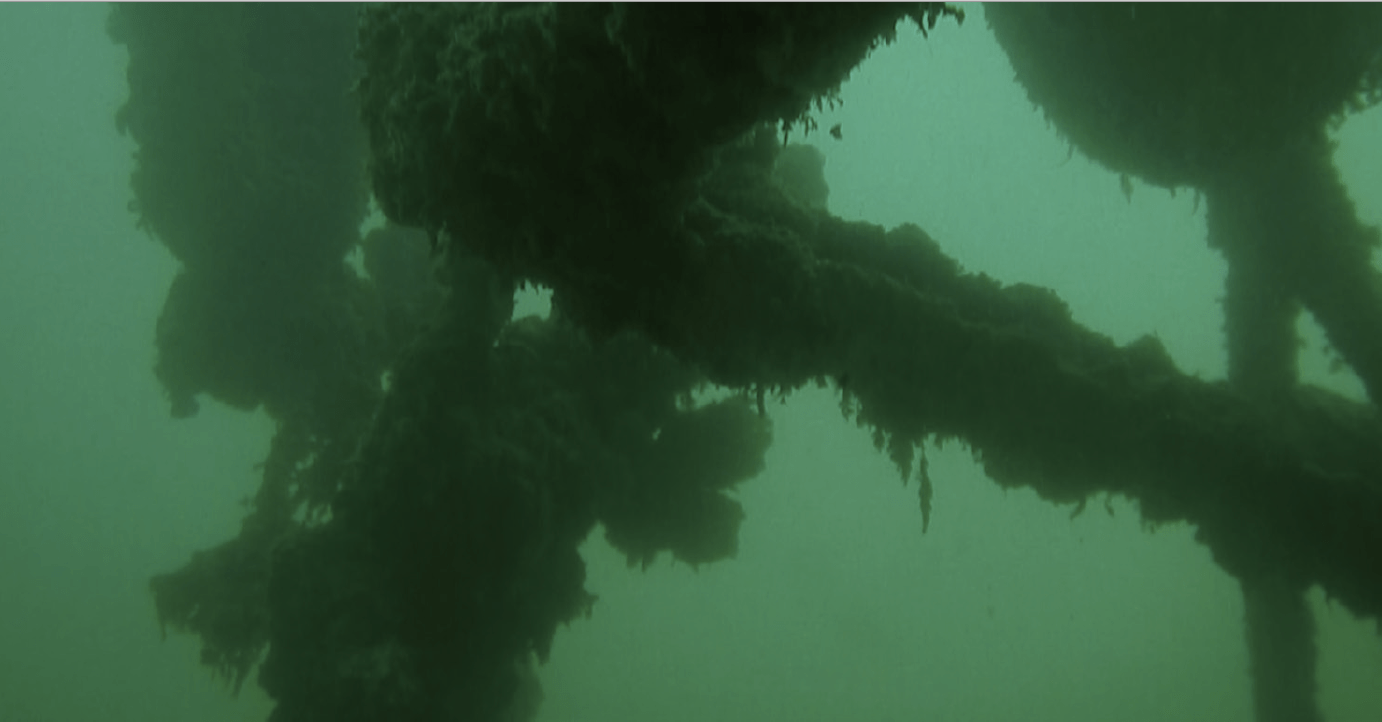
Victoria East (2017)
Recreate the vanished sea.
A waterproof camera had been descended 5 to 10 meters under the sea at various spots and at different times to sample images of water. Dou Wei’s (a Beijing-based songwriter in 1990s) single “Mountain and river” offers areference to the tempo of my rough cut. It was said that Dou Wei likeslandscape paintings so this song was an audio representation of a landscape. The moving images of water, level of light penetration and colour were arranged and edited based on the rhythm of the song. This video embodies nonarration but an experience of recreating the sea.
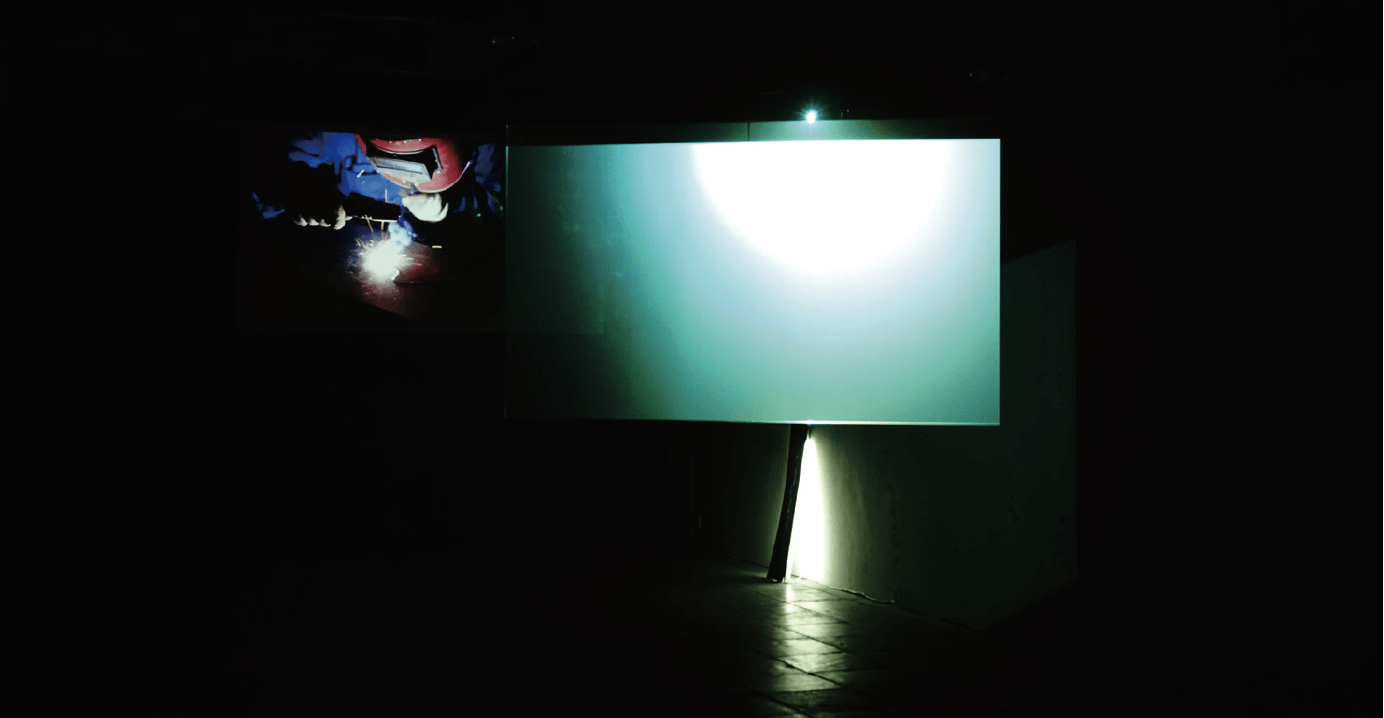
THE LAST COAST (2017)
How to draw a line?
This is Tseung Kwan O’s last coastline by nature. A weldman helps carve this line on a metal plate.Coastline, defining the sea and the land, is shaped by relentless waves and tidal currents. The crack and pattern on rocks reflect the relationship of the sea and the land. Coastline to me represents time, or the outline of time. I intend to associate this coastline with a particular moment in the progress of urban development; I chose 1960s. Tseung Kwan O, then the world’s renowned shipbreaking hub in 1940s, peaked its golden time in 1960s for heavy industries like vessel making, repairing and steel rolling. The gloryhalted when the government announced the newtown planning in 1982 leading to relocation or declineof the industries.
Miao Ying
Miao Ying (born 1985 in Shanghai, China. Lives and works in Shanghai and New York)
Miao Ying was born in Shanghai, China. She holds an MFA in Electronic Integrated Arts from the School of Art and Design at Alfred University and a BFA in New Media Arts from China Academy of Fine Arts. She resides in New York and Shanghai.
Her work highlights the attempts to discuss mainstream technology and contemporary consciousness and it’s impact on our daily lives, along with the new modes of politics, aesthetics and consciousness created during the representation of reality through technology. She deliberately applies a thread of humor to her works and address her Stockholm Syndrome relationship with censorship and self-censorship in the Chinese Internet (The Great Fire Wall).
Her most recent solo exhibitions include: “Miao Ying:Chinternet Plus”, First Look: New Art Online (New Museum, New York, 2016), “Content Aware” (Madein Gallery, Shanghai, 2016), “Chinternet How: a love story” (Galerie nächst St. Stephan Rosemarie Schwarzwälder, Vienna, 2016), “Holding a Kitchen Knife to Cut the Internet Cable” (Folklore of the cyber world: an online Exhibition for the Chinese Pavilion, Venice Biennale, (2015). She has shown her works at the “After Us” (co-presented by K11 Art Foundation and New Museum,(2017), “.com/.cn” (co-presented by K11 Art Foundation and MoMA PS1, 2017), “The New Normal—Art and China in 2017” (Ullens Center For Contemporary Art, 2017), “Secret Surface” (Kunst-Werke Institute for Contemporary Art, 2016), etc. In 2016, she has been nominated for Prix YISHU 8 Chine 2016. In 2015, she was nominated for the TAN Asia Prize and the 3rd Huayu Youth Adward.
Content-Aware, the Five Pillars of Awareness: Reclaiming Ownshipship of your Mind, Body and Future(2016)
Content-Aware is a large-scale installation comprising portable exhibition stands of the kind generally used in convention centers. Based on one of the most common Windows desktop backgrounds, the image used in the installation is a computer-generated depiction of a peaceful pastoral setting. This default desktop image has strong connotations of internet cafes and offices, the kinds of places where users have no power to personalize their computers. Five badly photo-shopped versions of the image are shown on large pillars, surrounding a banner with the strangely deflating self-motivational slogan, ‘Reclaiming Ownership of Your Mind, Body, and Future.’
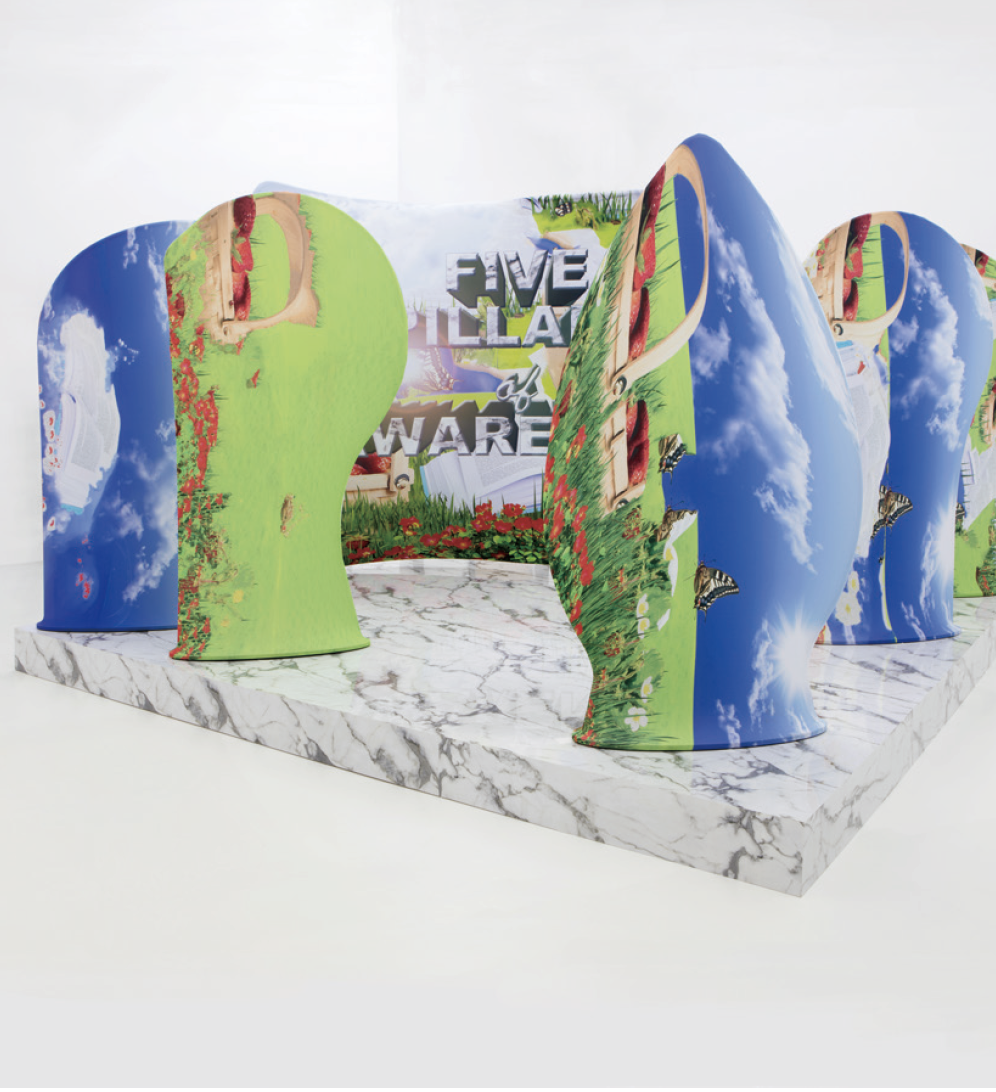
Zijie
Zijie (born in 1985 in Yulin, Guangxi, lives and works in Shanghai)
Zijie is an activist, writer and illustrator. Initially known best for his cartoons, currently, he mainly focuses on such issues as the effects of urbanization and its relation to spatial justice.
His artworks have been exhibited in Mana Contemporary, New York (2017); Yang Art Museum, Beijing (2017); Power Station of Art, Shanghai (2015); Times Museum, Guangzhou (2015); Ullens Center for Contemporary Art, Beijing (2015) – and many other places.
Sweet Potato Planting Project (2015-present)
Sweet Potato Planting Project is a continuation in Guangzhou of Zijie’s ongoing project in Shanghai where, roaming the city’s streets, he has planted sweet potatoes in public spaces and other unused green areas. Sweet potatoes are easy to grow and also express certain ideas about identity – for instance, some Chinese people liken their national identity to the character of sweet potatoes – but, in terms of their plantation and growth, they also maintain a kind of ‘guerrilla’ existence. Roaming the city, anyone may leisurely plant and harvest these tubers or any other edible plants.
But in urban spaces where edible plants are mostly wiped out, is there really leeway for such ‘guerrilla gardening’? Are there enough places for those people who wish to roam freely and escape control?
Zijie will now launch his planting project in Guangzhou, a city very different from Shanghai in that it is regarded as the motherland (or step-motherland) of the sweet potato in China; Here, the months of December and January mark the end of winter and the beginning of spring; the warm climate of southeast Asia enables plants to grow in all seasons and creates a feeling of abundance.
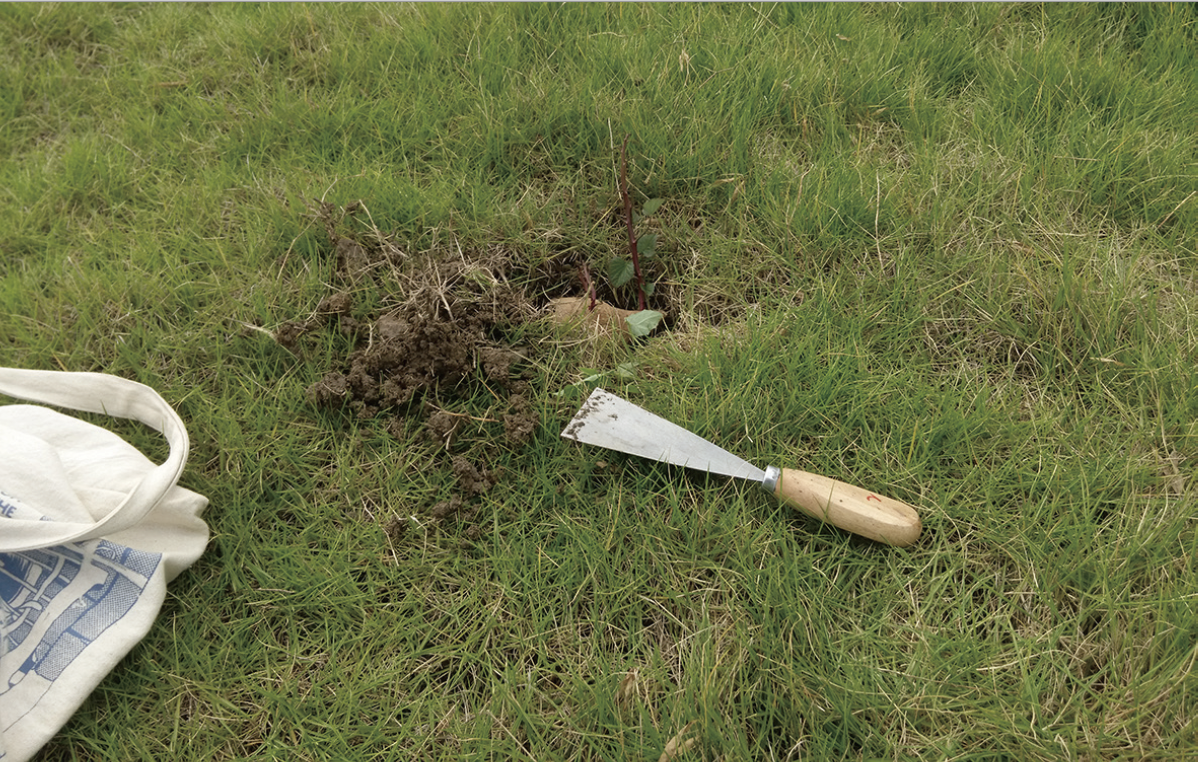
RACHEL RITS-VOLLOCH
Curator
Dr. Rachel Rits-Volloch is a graduate of Harvard University with a BA degree in Literature, and holds an M.Phil and PhD from the University of Cambridge in Film Studies. She wrote her doctoral dissertation on visceral spectatorship in contemporary cinema, focusing on the biological basis of embodiment. In 2016-2017, she was Visiting Professor at the Bauhaus University, Weimar, lecturing in its MFA program “Public Art and New Artistic Strategies” and its PhD program in Artistic Research. She is Director of the non-profit global platform for time-based art, MOMENTUM, which she founded in 2010.
DONG BINGFENG
Academic Director
Dong Bingfeng is a curator and producer based in Beijing. He is a research fellow in School of Inter-media Art, China Academy of Art. Since 2005, Dong Bingfeng has worked as curator in Guangdong Museum of Art and Ullens Center for Contemporary Art, Deputy Director of Iberia Center for Contemporary Art, Art Director of Li Xianting’s Film Fund, and Academic Director of OCAT Institute. In 2013, Dong Bingfeng was awarded the “CCAA Chinese Contemporary Art Critic Award”. In 2015, he was awarded the Chinese Contemporary Art Critic Award of Yishu:Journal of Contemporary Chinese Art.In 2017,he was awarded the Robert H.N.Ho Family Foundation Greater China Research Grant.
ABOUT RMCA
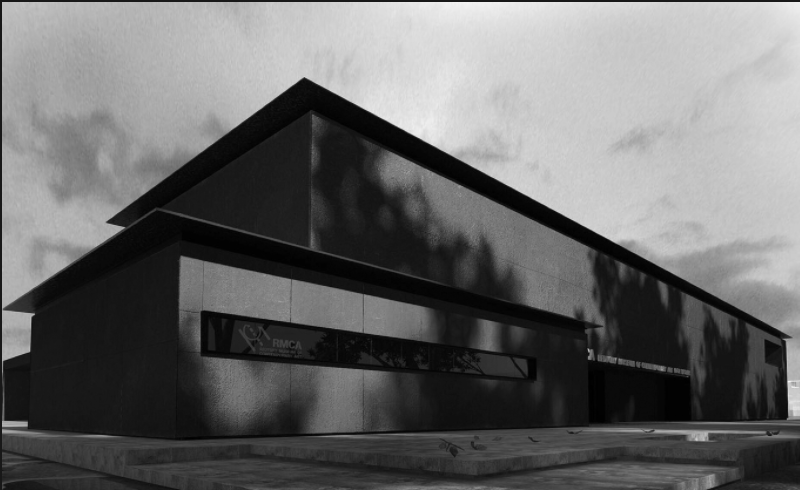
The Redtory Museum of Contemporary Art (RMCA) is a group of buildings located at the heart of the Guangzhou Redtory Art District. This former industrial area, situated by the Zhujiang River in the centre of the city, has been repurposed for cultural and leisure use and covers 170,000 square metres with over 100 buildings.
Comprised of factories, sheds, offices and warehouses designed by Russian architects at the beginning of the 1950s, the planning and architecture expresses the idealism of the 20th century industrial age. The outer surface of the main museum building (Hall 1) has since been clad in rough corten steel to emphasise its monumental historical significance.
The exhibition spaces of RMCA cover a total area of over 4,000m2 spread across six separate buildings (Halls 1, 2, 3 ,4 ,5 & 6). Halls 1 & 2 are over seven meters high, while the other spaces are more intimate. A workshop space for the Young Artists Programme has just been converted to supplement this. These resources give flexibility for planning many different kinds of exhibitions, performances and events.
RMCA is a private, non-profit Contemporary Art Museum with the complex function of making exhibitions, promoting academic research, organizing artists’residencies, running public programs for schools, universities and adult education, and facilitating exchanges of art, artists and exhibitions both within China and overseas.
ABOUT YOUNG ARTISTS PROGRAMME
It is only since the end of the 1970s that contemporary art has become established in China. First, in the mid-1980s, it was characterized by ‘The New Wave’ then, in the 1990s and after, by ‘New Cynicism’ and ‘Experimental Art,’ but the challenges facing art today demand a radically different approach.
Global flows of capital, and the burgeoning of transnational networks and social media have brought together, and transformed, art’s cultural and political context. A new generation of artists in China, and elsewhere, is facing, and digesting, the effects of this transformation.
This has made an impact on how art is made and thought about. Increasingly, art works adopt the form and discipline of archives as they confront memory and the past from different contemporary points of view, and even the conventions and boundaries of the art exhibition itself are gradually being eroded as art and life interpenetrate in new, unexpected ways.
For the art of today, museums take on the role more of workshops or laboratories as the concerns of artists, curators, designers, architects, intellectuals and the public begin to converge. The aim of the RMCA Young Artists Programme is to provide through exhibitions, residencies and its public activities an ever-broadening platform for this process to take place.
WITH THANKS TO THE GENEROUS SUPPORT OF:


 Back to Homepage
Back to Homepage

